- Home
- Services
- Hearing Evaluations
- Hearing Consultations
- Hearing Aid Fittings
- Hearing Aid Repair
- Custom Earmolds & Ear Plugs
- Assistive Listening Devices(ALDs)
- Cerumen (Earwax) Management
- Cochlear Implant
- Hearing Aids
- Smart Hearing Aids
- Hearing Loss And Brain Health
- Hearing Aid Accessories
- Hearing Aid Styles
- Oticon (Real) Hearing Aids
- Phonak Hearing Aids
- ReSound Hearing Aids
- Signia Hearing Aids
- Sonic Hearing Aids
- Starkey (Genesis AI) Hearing Aids
- Unitron Hearing Aids
- Widex Hearing Aids
Hearing aids come in a wide range of technology levels and styles. They are offered in various levels ranging from ‘Entry-level’ to ‘Premium’. Within each level different technology and features are available. Some are designed for active lifestyles where others are for those in need of a ‘Power’ instrument. Choosing the right one depends on your specific needs and requirements. Our hearing care professionals are experts in each and can help you make the right choice.
Things to Consider
- The degree of hearing loss
- Dexterity
- Budget
- Lifestyle
- Cosmetics
- Skin Sensitivities
- Medical Considerations
In-the-Ear (ITE)
Hearing aids worn in the ear are generally custom-fit based on an impression of the ear. There are a variety of ITE styles that are available.
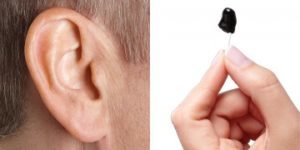
Invisible In-the-Canal (IIC)
IIC instruments are the smallest custom hearing aids available. They sit in the second bend of the canal and are nearly invisible to the naked eye. They are designed for mild to moderate hearing loss.
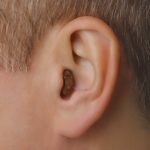
Completely In-the-Canal (CIC)
CIC instruments fit deeply into the ear canal. Slightly larger than the IIC, they are still relatively hard to see. They are designed for mild to moderate hearing loss.
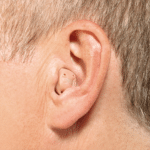
In-the-Canal (ITC) or Half Shell
ITC instruments sit in the lower portion of the outer ear bowl. Since they are slightly larger than the CIC, additional features are possible. These include a larger battery, directional microphones, and volume controls. They are designed for mild to moderate hearing loss.
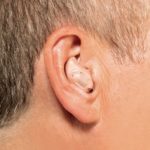
In-the-Ear (ITE) or Full Shell
Full shell instruments fill the entire outer ear bowl. Due to their larger size, they allow for more features and functions. These include a larger battery, directional microphones, volume controls, and can fit larger receivers for more severe hearing losses. They are designed for mild to severe hearing losses.
Behind-the-ear (BTE)
Behind-the-Ear instruments sit behind or on top of the outer ear with a tube that connects to an ear tip or mold inside of the ear. BTE’s offer the widest range of features, colors, battery types, and degrees of power. Today, they’re offered in small, discreet designs that are often unnoticeable when worn. For those who prefer to “show them off”, they also come in multiple colors and designs.
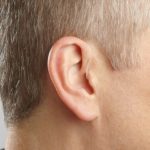
Mini BTE
Mini BTE styles are designed to hide behind the outer ear and have ultra-thin tubing to discreetly route sound into the ear. The tubing typically connects to a soft tip that sits in the ear canal but doesn’t occlude it. The result is a natural, open feeling as airflow and sound enter the ear naturally around the tip, while amplified sound enters through the tip. This is known as “open fitting” and is recommended for mild to moderate hearing loss.

Receiver-in-the-ear (RITE) or Receiver-in-canal (RIC):
RITE hearing aid styles are BTEs that have the speaker built into the ear tip instead of the main body of the hearing aid. They are relatively unnoticeable when worn and are designed for mild to severe hearing loss.

BTE with Earmold:
BTEs with earmolds have a longer shape that follows the contour behind the outer ear. Their larger size enables them to house features such as a program button and volume control. The earmold color and style, as well as the wearer’s hairstyle, determine exactly how they’ll look on each person. They are designed for mild to profound hearing loss.
